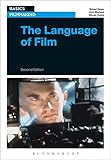The language of film [Texte imprimé] / Robert Edgar, John Marland, Steven Rawle
نوع المادة : نصتفاصيل النشر:London ; New Delhi ; New York [etc.] : Fairchild Books, 2015الطبعات:2nd edوصف:1 vol. (216 p.) : ill., couv. ill. ; 24 cmتدمك:
نصتفاصيل النشر:London ; New Delhi ; New York [etc.] : Fairchild Books, 2015الطبعات:2nd edوصف:1 vol. (216 p.) : ill., couv. ill. ; 24 cmتدمك:- 978-1-4725-7524-1
- 791.43014 23E
- 791.43
| نوع المادة | المكتبة الحالية | رقم الطلب | رقم النسخة | حالة | تاريخ الإستحقاق | الباركود | |
|---|---|---|---|---|---|---|---|
|
|
Bibliothèque centrale En accès libre | 791.43 / 1047 (إستعراض الرف(يفتح أدناه)) | 1 | المتاح | 000006179663 |
Browsing Bibliothèque centrale shelves, Shelving location: En accès libre إغلاق مستعرض الرف(يخفي مستعرض الرف)


|


|


|


|


|


|


|
||
| 791.43 / 1044 Anatomie d'un rapport de Luc Moullet et Antonietta Pizzorno du bon usage cinématographique du MLF et du porno / | 791.43 / 1045 Artavazd Péléchian une symphonie du monde / | 791.43 / 1046 Engaging the past mass culture and the production of historical knowledge / | 791.43 / 1047 The language of film | 791.43 / 1048 A revolution for the screen Abel Gance's Napoleon / | 791.43 / 1049 Merchant-Ivory interviews / | 791.43 / 1050 Le cinéma au XXe siècle entre loi du marché et règles de l'art / |
"Becoming an effective filmmaker involves being deliberately mindful of the structures and conventions that allow film to communicate meaning to a global audience. The Language of Film explores complex topics such as semiotics, narrative, intertextuality, ideology and the aesthetics of film in a clear and straightforward style, enabling you to apply these ideas and techniques to your own analysis or film-making. With full-colour film stills, in-depth case studies and a wide range of practical exercises, The Language of Film will help you to make the transition from consumer to practitioner - from someone who just responds to the language of film, to someone who actively uses it. In the second edition, a new chapter examines how sound contributes to narrative and space to tell stories, create imaginary worlds and shape the realist (and often non-realist) effect of cinema. Along with two case studies from the first edition, Seven (dir: David Fincher) and Citizen Kane (dir: Orson Welles), the second edition also includes five new case studies: The Secret Life of Walter Mitty (dir: Ben Stiller), Dead Man's Shoes (dir: Shane Meadows), Hero (dir: Yimou Zhang), Berberian Sound Studio (d: Peter Strickland) and Psycho (d: Alfred Hitchcock)"-- Provided by publisher
Notes bibliogr.
Machine generated contents note: -- Introduction -- Chapter 1 - Semiotics: Images; The Visual Mind; Reading the Signs; Making Meaning; Codes and Filters; Case study: Seven (d: David Fincher, US); Chapter 1 Summary. Chapter 2 - Narrative: Theories of Storytelling; Structuralism; Theories of Structure; Genette's Narrative Discourse; Case Study: The Secret Life of Walter Mitty (dir: Ben Stiller); Chapter 2 Summary. Chapter 3 - Intertextuality: Text; Quotation; Allusion; Cult Film; Genre; Case Study: Citizen Kane (dir: Orson Welles); Chapter 3 Summary. Chapter 4 - Ideology: Ideological Analysis; Realism; Ideology and Genre; Case study: Dead Man's Shoes (dir: Shane Meadows); Chapter 4 Summary. Chapter 5 - Frames and Images: The Shot; Distance, Height and Framing; Mise en Scene; The Mobile Camera Frame; Time and the Long Take; Case Study: Hero (dir: Yimou Zhang); Chapter 5 Summary.Chapter 6 - Sound: Film: An Audio-visual Medium; Sound Properties; Diegetic and Non-diegetic Sound; Off-screen Space and Audio; The voice; Music; Case study: Berberian Sound Studio (dir: David Strickland); Chapter 6 Summary.Chapter 7 - Constructing Meaning: Continuity Editing; Discontinuity Editing; Montage; Pacing; Space; Case study: Psycho (dir: Alfred Hitchcock); Chapter 7 Summary.Conclusion
لا توجد تعليقات على هذا العنوان.

